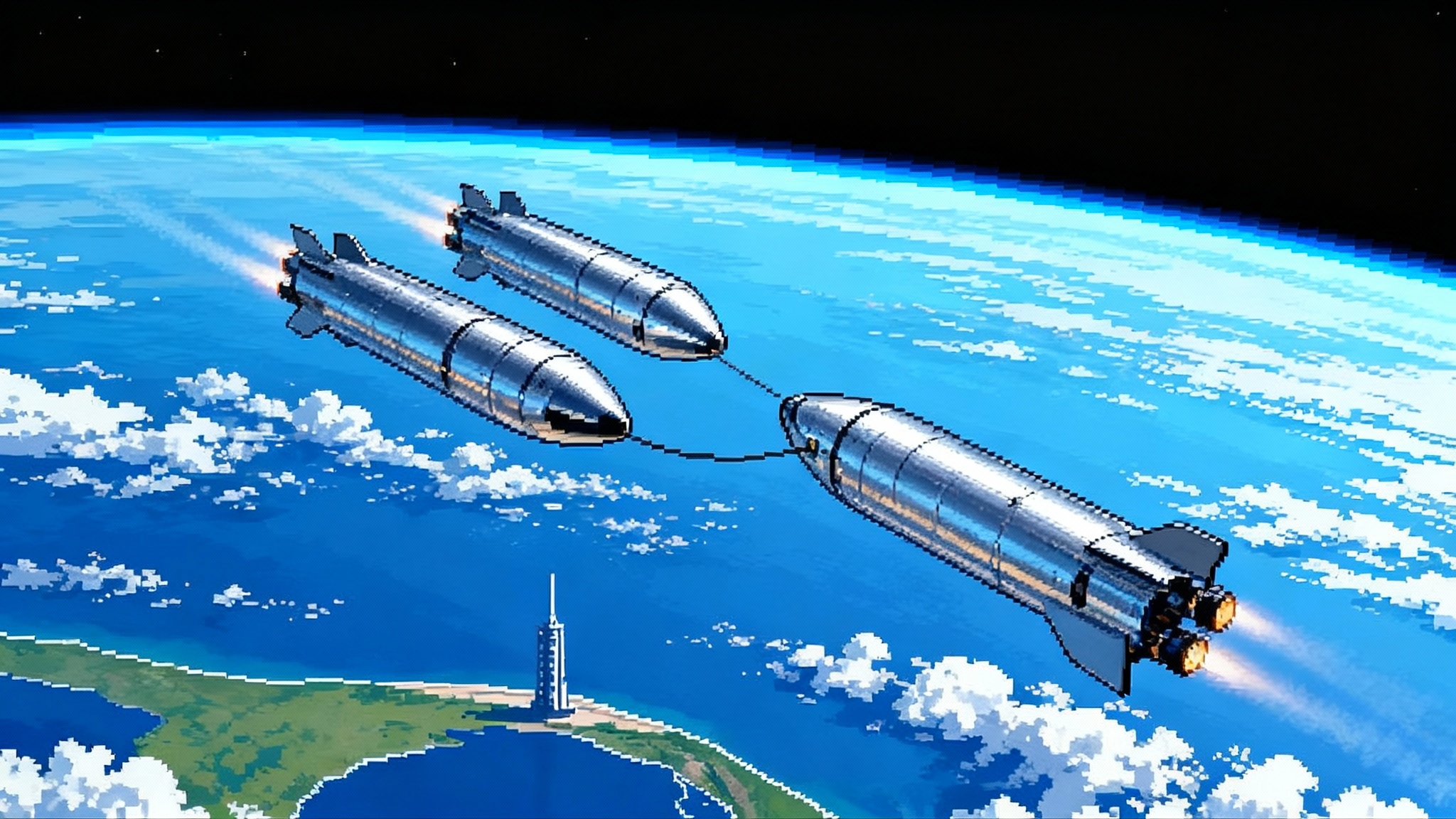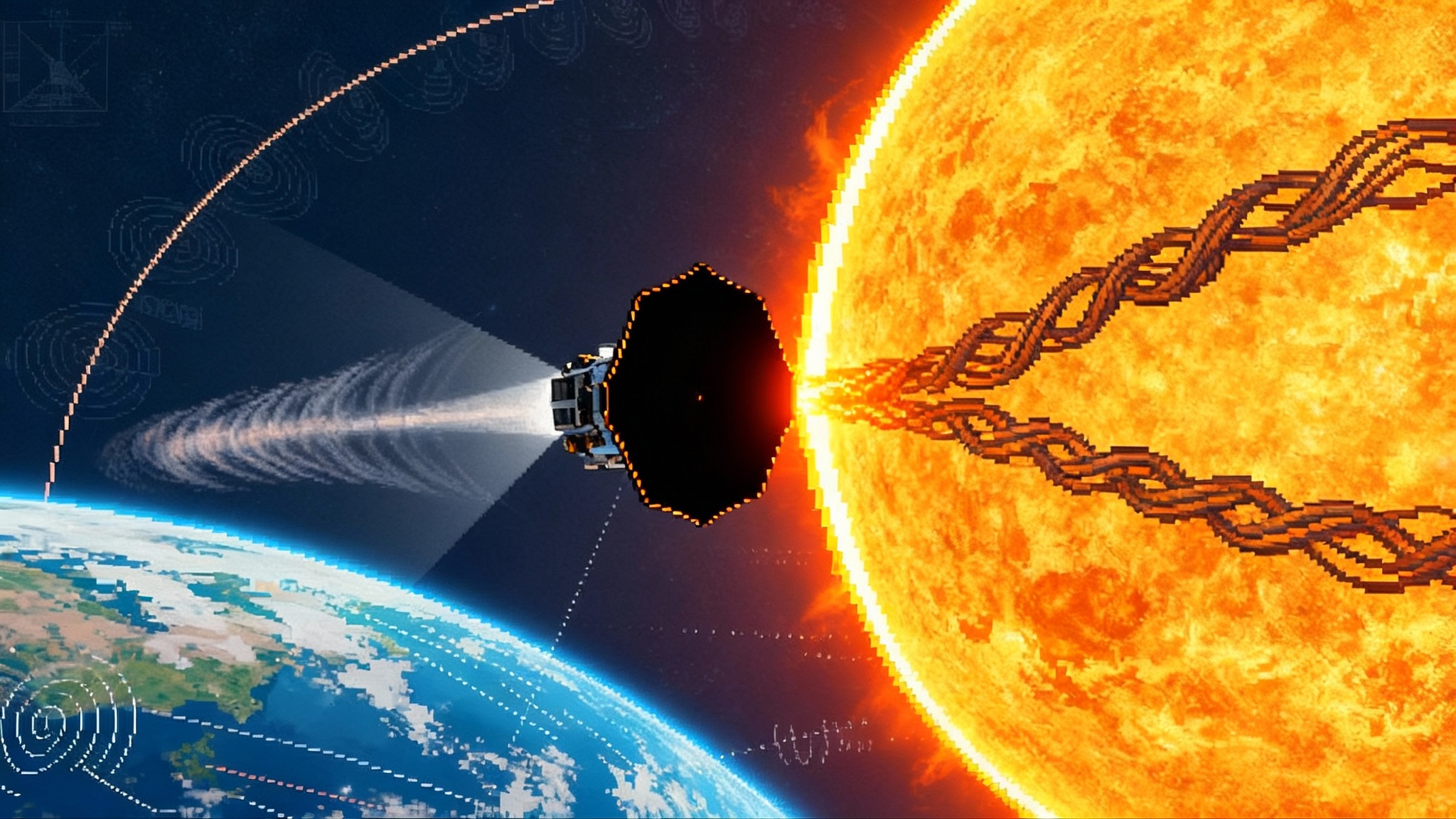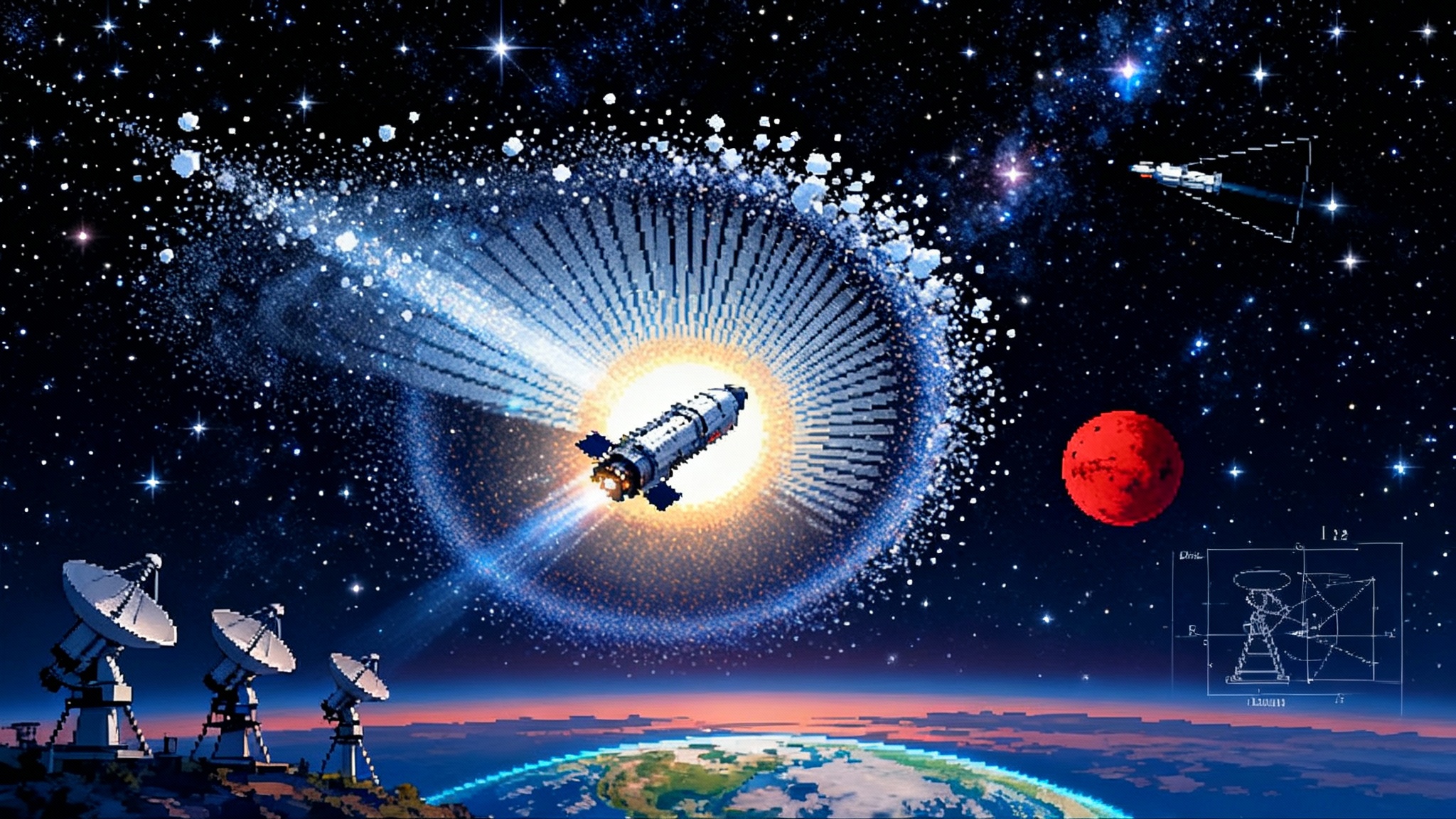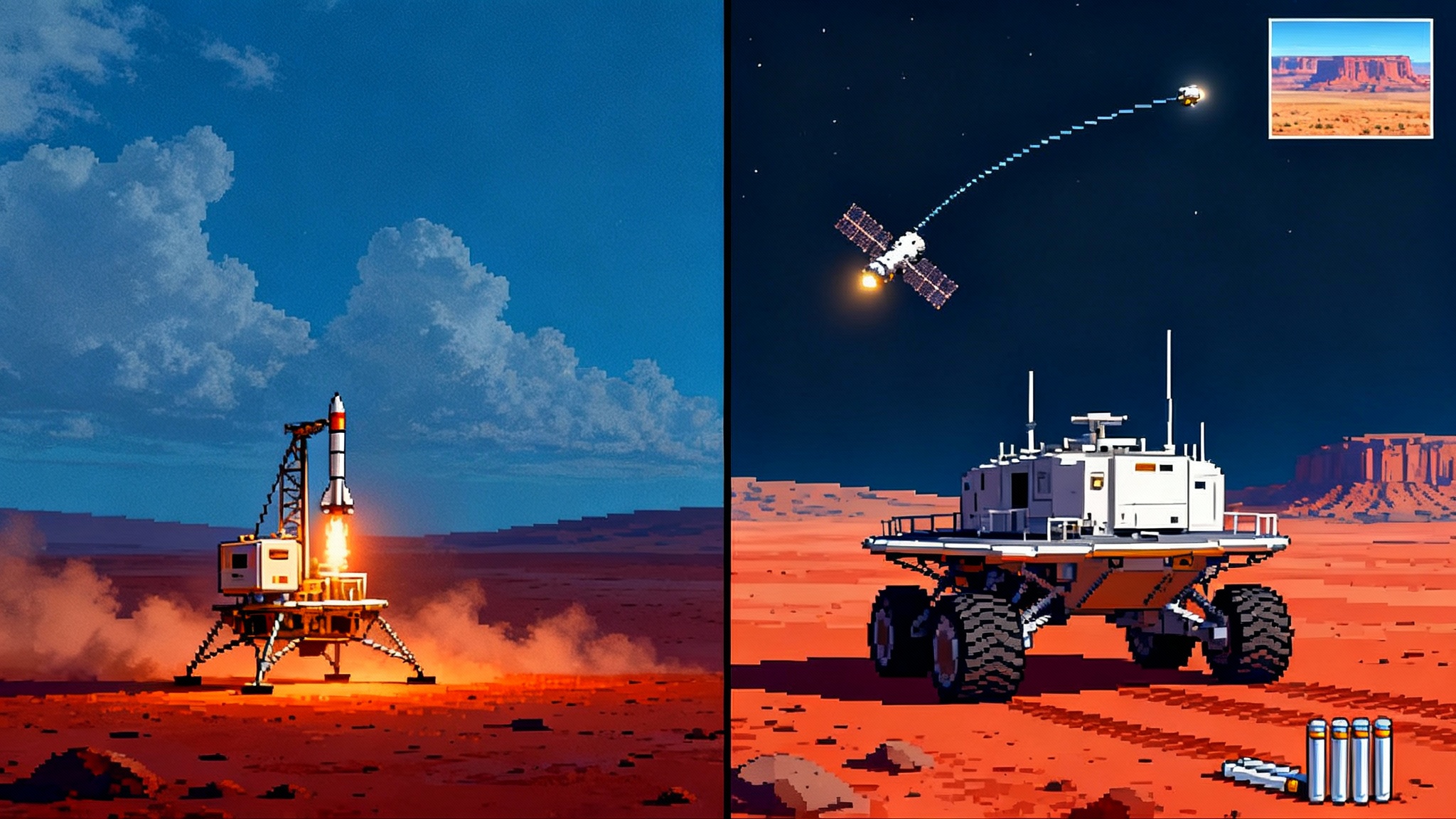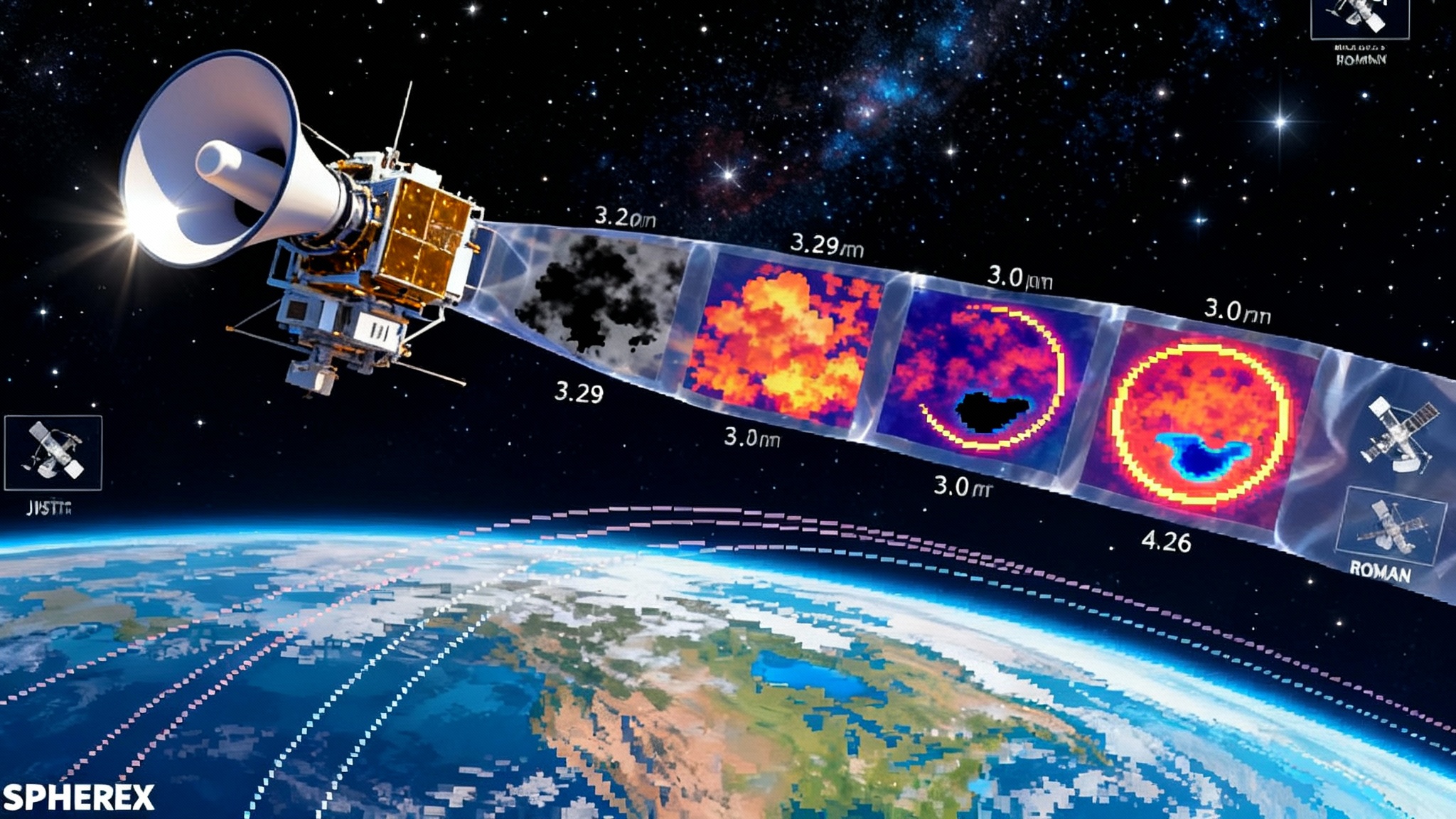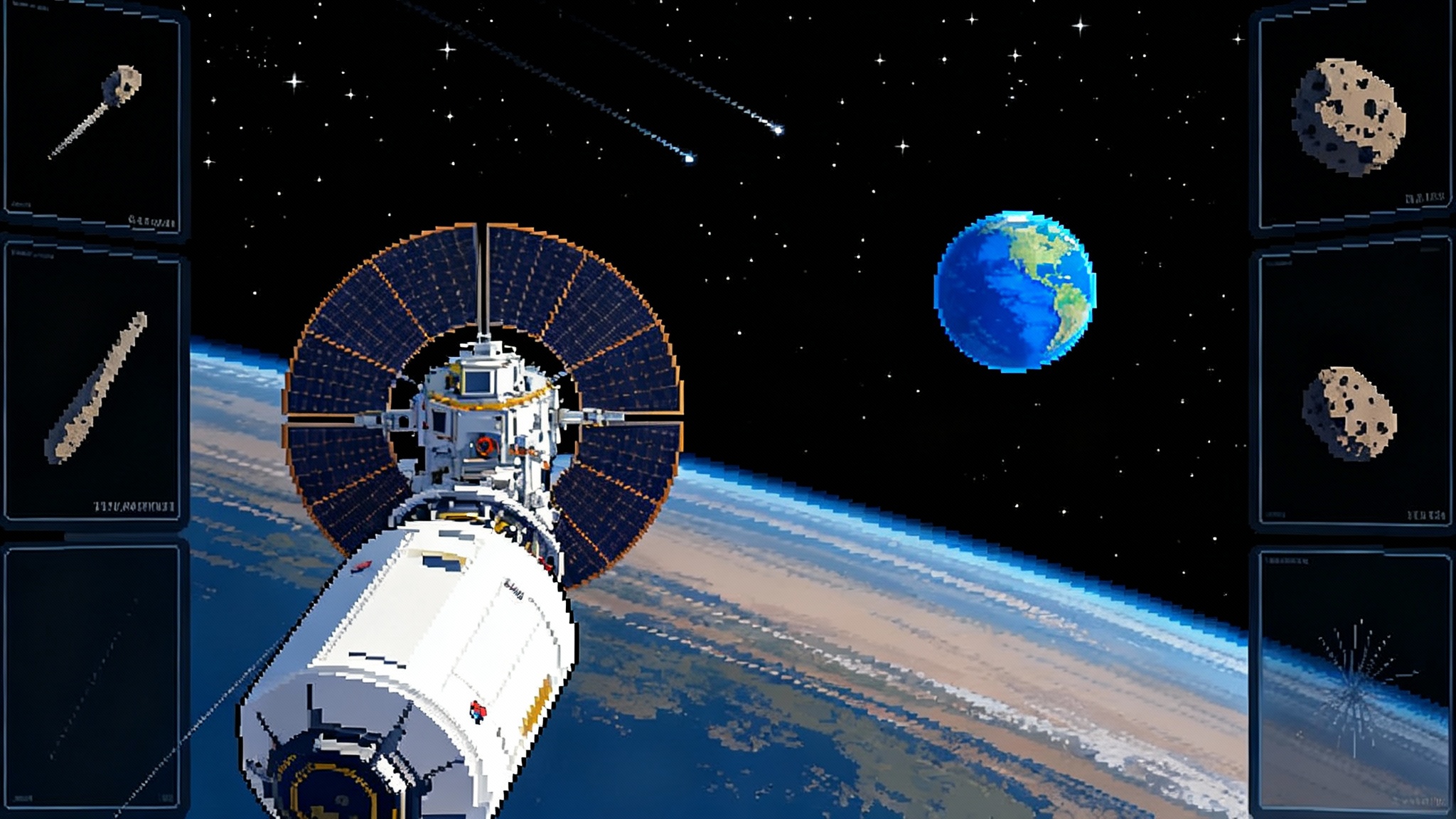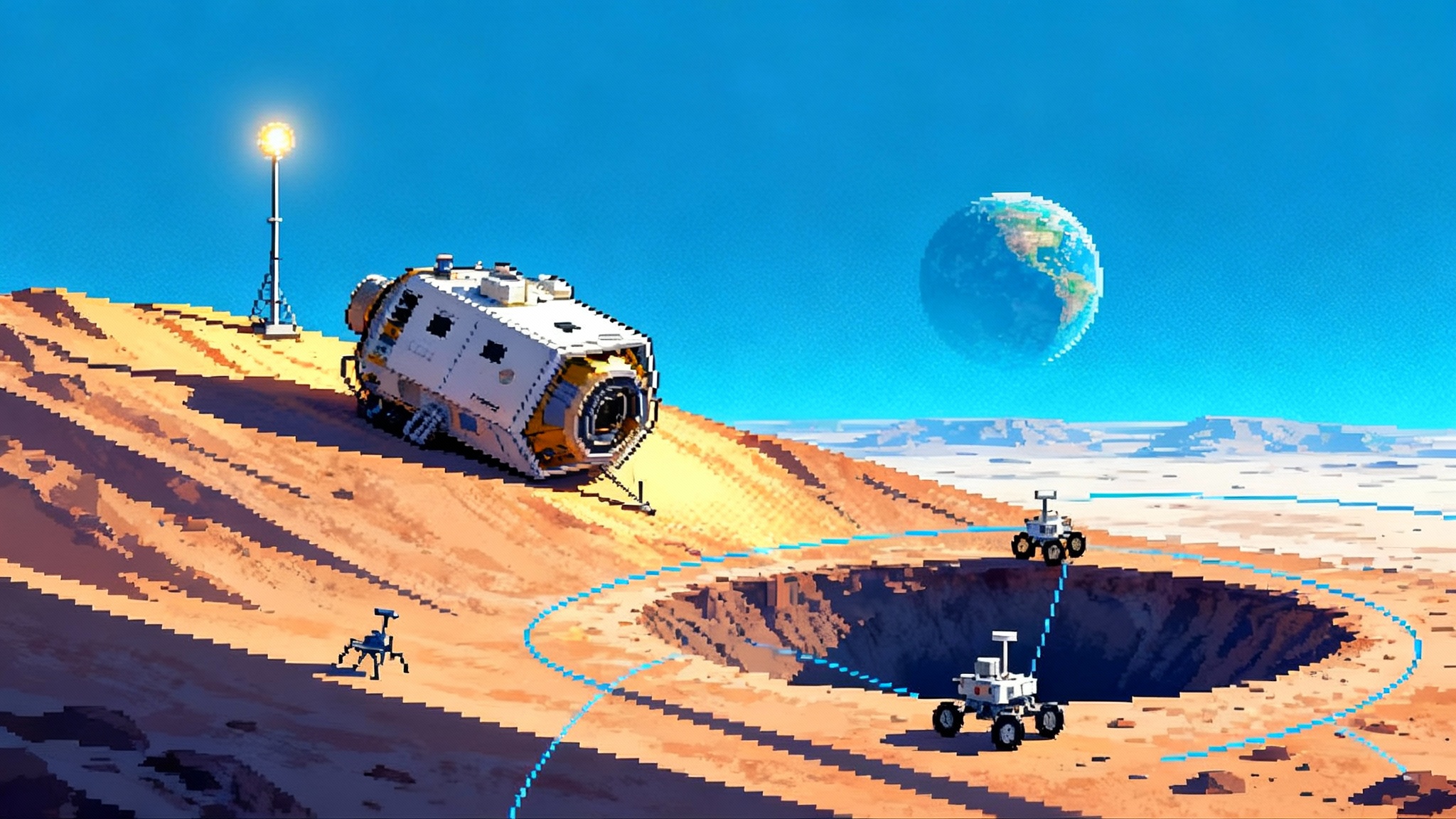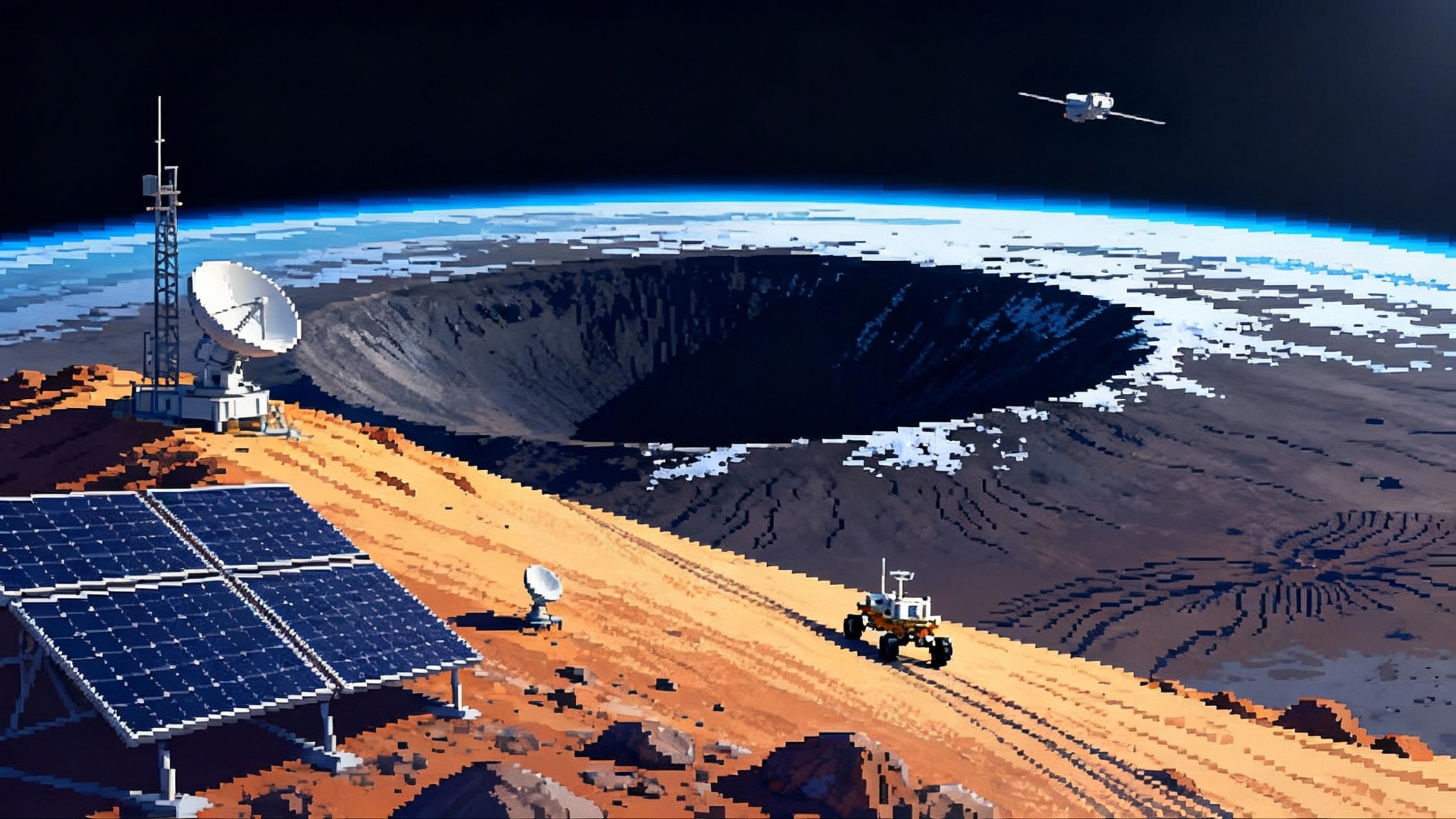 Space
Space
Articles under the Space category.
New Glenn’s next act: ESCAPADE could switch on Mars space weather
Blue Origin is preparing New Glenn for a late‑2025 science run with NASA’s twin ESCAPADE probes. If the schedule holds, the mission could turn Mars space weather from research into operations, feeding forecasts for entry, comms, and radiation risk.
IMAP at L1 is turning the heliosphere into a weather map
Fresh off a shared ride to L1 with NOAA’s SWFO‑L1 and NASA’s Carruthers observatory, IMAP kicks off continuous mapping of the heliosphere. The payoff is practical: earlier radiation alerts for Artemis crews and smarter routes for deep‑space missions.
From First Look to Firehose: Rubin’s 2026 Discovery Wave
Rubin’s first images and Data Preview 1 turned the sky into a stream. Here is what changes in fall 2025, how one‑minute alerts will work, and the concrete steps teams can take now to be ready for the 2026 discovery wave.
Starship Flight 11 Signals the Start of Orbital Refueling
Flight 11 hit its marks and brought both stages down under control, clearing the runway for the first in‑orbit propellant transfers. Here is what refueling really takes, what to watch next, and how it could pull NASA’s Artemis timeline left.
Apophis 2029: OSIRIS‑APEX slingshot starts a global drill
After a precision Earth flyby on September 23, 2025, NASA's OSIRIS-APEX is racing toward Apophis to turn a safe 2029 close pass into a full-scale planetary defense rehearsal. Here is the four-year plan and why it matters.
A New Floor for Exoplanet Imaging: JWST Spots a Cold Saturn
Announced on June 25, 2025, JWST’s MIRI coronagraph revealed a likely Saturn-mass companion in TWA 7’s disk, potentially Webb’s first directly imaged planet. The result lowers the mass floor for space-based direct imaging and sets up a wave of discoveries through 2028.
Farside rocks rewrite the Moon’s heat and water map
Peer‑reviewed results from Chang’e 6 are rewriting assumptions: the lunar farside runs cooler and carries fewer volatiles, with a drier mantle. Here is how that should reshape south pole sites, ISRU bets, and mission priorities through 2027.
Blue Ghost Made the Moon Commercial and Taught It to Navigate
Firefly’s Blue Ghost touched down on March 2, 2025, ran for more than 14 days, and enabled the first lunar GNSS fix hours later. When NASA expanded its data purchase on September 22, 2025, the signal was unmistakable: the Moon’s next phase is commercial, autonomous, and moving fast.
Parker at Solar Maximum: 2025 Sun Dives Make Weather Now
As Solar Cycle 25 peaks in late 2025, Parker Solar Probe is flying inside the Sun’s corona and capturing the earliest signatures of flares, CMEs, and particle storms. Here is how those in-corona measurements can tighten arrival-time forecasts, safeguard Artemis crews, and fortify power grids.
3I/ATLAS is changing comets. Time to change ours
Observations of interstellar comet 3I/ATLAS revealed unexpected early water activity and a carbon dioxide dominated coma. Here is why that changes our assumptions about planet formation and how to build an always on response before the next visitor arrives.
MSR 2.0: NASA’s two-track race to bring Mars samples home
In 2025 NASA split Mars Sample Return into two competing designs to cut cost and time. Here’s how the heritage sky-crane path stacks up against industry heavy-lift options, what Europe’s orbiter contributes, and the milestones to watch before the 2026 downselect.
SPHEREx begins a 102‑color map of the entire sky, live
NASA’s SPHEREx has entered routine science, scanning the entire sky in 102 infrared colors and refreshing the atlas twice a year. Here is how this live, spectrum-rich map will accelerate discoveries from water-ice chemistry to cosmic inflation.
Euclid’s 2025 releases reboot the dark universe timeline
March’s public Q1 data and September’s Flagship simulations moved Euclid from pretty pictures to industrial cosmology. Here is how AI, citizen science, and Roman will sharpen dark energy tests by 2026 to 2028.
Tianwen-2 hits halfway to Kamoʻoalewa, resetting the 2020s
China’s Tianwen-2 has crossed the midway point to Earth’s quasi-moon Kamoʻoalewa. The halfway image, a 2026 rendezvous plan, and a 2027 return window could reset small-body science, planetary defense, and the pace of sample missions.
IMAP leads a three-spacecraft space-weather stack at L1
Three new spacecraft are headed to the Sun–Earth L1 point to turn space-weather warnings into real operational minutes. Here is what each mission measures, why Solar Cycle 25’s peak makes timing crucial, and the milestones to watch next.
The Moon’s First LTE Switch-On Starts a Space Internet
A 25-minute activation of Nokia Bell Labs’ LTE box on Intuitive Machines’ IM-2 proved that standards-based cellular can survive launch, landing, and lunar vacuum. Here is how that small spark can scale into an interoperable lunar internet for rovers, hoppers, and ISRU.
Starship Flight 11: the week reusability jumps a gear
Starship Flight 11 is set for October 13 with a new landing-burn profile and a workhorse heat shield. Here is how those choices set up pad catches, faster turnarounds, near-term lunar cargo, and a clear three-flight roadmap.
Chang’e‑6 rewrites the Moon: cooler, drier, stranger
New analyses of Chang'e-6 lunar samples reveal an ultra-dry farside mantle, cooler interior temperatures, and longer-lived volcanism, reshaping formation models and near-term choices for Artemis, CLPS, and Blue Moon.



